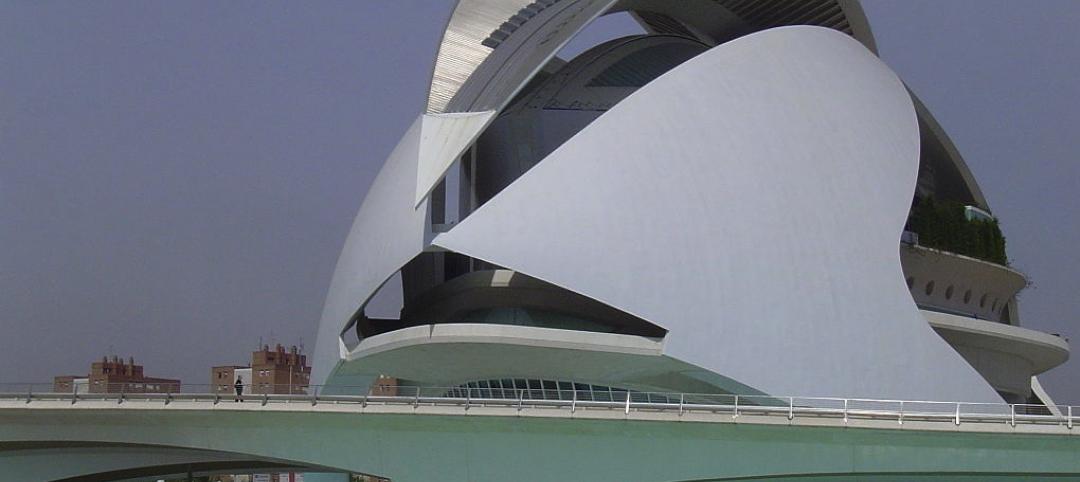A team of alumni from the NewSchool of Architecture and Design in San Diego has taken over a 28,500-sf empty city block in that metro to create what they hope will be a revenue-generating urban park that, when it opens on March 5, includes food service, retail, performance and meeting spaces, and a dog park.
The urban park, called Quartyard, was funded partly by local residents through a Kickstarter campaign that raised $60,000 from 300 donors in 30 days. All told, Research Architecture Development Laboratory (RAD Labs) has $500,000 invested in this venture, according to its 29-year-old CEO Philip Auchettl, who formed the company with NewSchool classmates David Loewenstein, who is RAD Labs’ COO; and Jason Grauten, a partner. The park, in fact, started out as their college thesis project. (The company’s CFO, Adam Jubela, has a degree in entrepreneuriship and finance from the University of Arizona.)
Originally, Auchettl tells BD+C, RAD Labs’ plan was to install “pop-up” structures on the lot. “But then we asked ourselves why properties like these were vacant in the first place.” His team concluded that there was nothing to draw people or businesses to the site. So RAD Labs decided to “activate” the lot temporarily, “as a placeholder for future expansion.”
RAD Labs has already tested its “activation” strategy, as a way of drawing people to a site, with a 12-month installation at another empty lot, which used 300 recycled pallets for benches and tables. The site is next to a coffeehouse, “which encourages people to walk in and use the space,” says Auchettl.
After meeting with former Mayor Bob Filner and the city’s attorney, RAD Labs agreed to lease the vacant block for Quartyard for two years, with a 12-month extension. The city’s development arm, Civic San Diego, eventually intends to build high-rise housing on this site, although no timetable has been set, and this block has been vacant for a number of years.
(The San Diego Union-Tribune reports that RAD Labs is paying the city $1 per year for the lot, and will split any profits with the city and its financial partners. Auchettl tells BD+C that local residents and students “who wanted to become part of something different and exciting” are also investors. He did not disclose any names.)
As of last week, Quartyard had three permanent vendors: Best Beverage Catering, which will run a beer garden (hence the park’s name); a mini coffee shop, and a restaurant called S&M Sausage & Meat. Auchettl says that when the park opens it will offer a series of food trucks that might change from day to day; an area where concerts, meetings, and private dinners can be held; and a dog park, which should be a big hit in downtown San Diego where “there seem to be more dogs than people,” he quips.
Vendors will set up in 14 recycled shipping containers around the periphery of the park. They purchase and refurbish the containers and lease their space. Auchettl says his team was drawn to the “simplicity” and portability of the containers, which have become popular components in the urban “cargotecture” movement that has sprung up in different parts of the country.
Auchettl says his company—located in offices at NewSchool, a few blocks from Quartyard—isn’t trying to reinvent the wheel. “But an urban park today can’t just be a few benches and trees. Now, it has to be an activity space.”
Related Stories
| May 29, 2014
7 cost-effective ways to make U.S. infrastructure more resilient
Moving critical elements to higher ground and designing for longer lifespans are just some of the ways cities and governments can make infrastructure more resilient to natural disasters and climate change, writes Richard Cavallaro, President of Skanska USA Civil.
| May 23, 2014
Big design, small package: AIA Chicago names 2014 Small Project Awards winners
Winning projects include an events center for Mies van der Rohe's landmark Farnsworth House and a new boathouse along the Chicago river.
| May 23, 2014
Top interior design trends: Gensler, HOK, FXFOWLE, Mancini Duffy weigh in
Tech-friendly furniture, “live walls,” sit-stand desks, and circadian lighting are among the emerging trends identified by leading interior designers.
| May 22, 2014
No time for a trip to Dubai? Team BlackSheep's drone flyover gives a bird's eye view [video]
Team BlackSheep—devotees of filmmaking with drones—has posted a fun video that takes viewers high over the city for spectacular vistas of a modern architectural showcase.
| May 22, 2014
IKEA to convert original store into company museum
Due to open next year, the museum is expected to attract 200,000 people annually to rural Älmhult, Sweden, home of the first ever IKEA store.
| May 21, 2014
Gehry unveils plan for renovation, expansion of Philadelphia Museum of Art [slideshow]
Gehry's final design reorganizes and expands the building, adding more than 169,000 sf of space, much of it below the iconic structure.
| May 20, 2014
Kinetic Architecture: New book explores innovations in active façades
The book, co-authored by Arup's Russell Fortmeyer, illustrates the various ways architects, consultants, and engineers approach energy and comfort by manipulating air, water, and light through the layers of passive and active building envelope systems.
| May 19, 2014
What can architects learn from nature’s 3.8 billion years of experience?
In a new report, HOK and Biomimicry 3.8 partnered to study how lessons from the temperate broadleaf forest biome, which houses many of the world’s largest population centers, can inform the design of the built environment.
| May 19, 2014
Calatrava wins court case concerning 'Calatrava bleeds you dry' website
A judge has ordered the left-wing political party Esquerra Unida to pay €30,000 to Santiago Calatrava because of "insulting and degrading" website.
| May 15, 2014
First look: 9/11 Memorial Museum opens to first-responders, survivors, 9/11 families [slideshow]
The 110,000-sf museum is filled with monumental artifacts from the tragedy and exhibits that honor the lives of every victim of the 2001 and 1993 attacks.
















